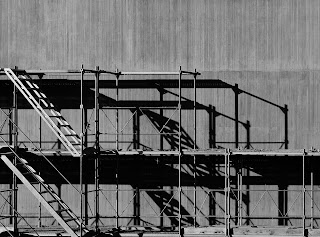Exploring the Versatility and Safety of Frame Scaffolding
When it comes to construction projects, ensuring worker safety and efficiency is paramount. One essential tool that has revolutionized the construction industry is frame scaffolding. Offering stability, flexibility, and ease of use, frame scaffolding has become a popular choice for construction professionals worldwide. In this article, we will delve into the world of frame scaffolding, exploring its features, advantages, and safety considerations.
What is Frame Scaffolding?
Frame scaffolding, also known as modular scaffolding or baker scaffolding, is a temporary structure used to provide a platform for workers and materials during construction, renovation, maintenance, or repair projects. It consists of a series of interconnected frames, cross braces, platforms, and guardrails that create a stable and secure working environment at various heights.
Key Features and Components
Frames: Frame scaffolding is constructed using vertical frames made of steel or aluminum. These frames are connected vertically to form a stable tower structure. The frames are available in different sizes, typically ranging from 3 to 7 feet in height and 5 to 10 feet in width.
Cross Braces: Horizontal cross braces provide lateral stability to the scaffolding structure. They connect the frames at predetermined intervals, preventing swaying and enhancing the overall stability of the system.
Platforms: Wooden or metal platforms are placed on the horizontal rungs of the frames to create a stable working surface for workers and materials. These platforms can be adjusted at different heights, allowing for customization based on the specific project requirements.
Guardrails: Guardrails are an essential safety feature of frame scaffolding. They are installed along the open sides of the scaffolding structure to prevent accidental falls. Guardrails typically consist of top and mid-rails, toe boards, and netting systems to ensure a safe working environment.
Advantages of Frame Scaffolding
Versatility: Frame scaffolding is highly versatile and can be used for various applications, including construction, painting, plastering, and maintenance tasks. It can be easily assembled, disassembled, and reconfigured to adapt to different project requirements.
Stability and Load-bearing Capacity: Frame scaffolding provides excellent stability and can support heavy loads, making it suitable for a wide range of construction activities. The robust frame design, coupled with cross braces and secure connections, ensures a safe working platform.
Easy Assembly and Portability: Frame scaffolding is designed for easy setup and dismantling, enabling construction teams to save valuable time and resources. Its modular design allows for convenient transportation and storage, making it a preferred choice for projects that require frequent relocation.
Enhanced Safety: With built-in guardrails and toe boards, frame scaffolding prioritizes worker safety. The secure working platform reduces the risk of falls and provides a stable base for workers to perform tasks efficiently.
Safety Considerations
While frame scaffolding offers numerous advantages, it is crucial to follow proper safety protocols to minimize the risk of accidents. Here are some key safety considerations:
Inspection: Regularly inspect the scaffolding for any defects or damage before each use. Check for loose connections, missing parts, and ensure the scaffold is level and stable.
Proper Assembly: Follow the manufacturer's guidelines and industry best practices for assembling and dismantling the scaffolding. Ensure all components are securely connected, and cross braces are properly installed to maintain stability.
Secure Footing: Place the scaffold on a level surface, use base plates or adjustable jacks to provide a solid footing. Avoid unstable or uneven ground that may compromise the stability of the structure.
Load Capacity: Adhere to the recommended load capacity of the scaffolding system and avoid overloading it with excessive weight or materials.
Fall Protection: Always utilize the provided guardrails, toe boards, and personal protective equipment (PPE) to prevent falls and ensure worker safety. Train workers on safe practices and proper use of the scaffolding system.
Frame scaffolding has become an indispensable tool in the construction industry, providing a secure and efficient platform for workers to carry out a variety of tasks at different heights. Its versatility, stability, and ease of assembly make it a popular choice for construction professionals worldwide. However, it is crucial to prioritize safety by following proper assembly guidelines, conducting regular inspections, and adhering to recommended load capacities. With the right precautions in place, frame scaffolding continues to enhance construction safety and productivity on job sites across the globe. Learn more about www.plettac.com.pl/en



Komentarze
Prześlij komentarz